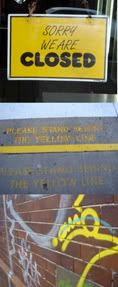Relational Aesthetics by Nicolas Baurriaud is turning out to be a key element in me research this year. I’m taking out (piecing together) themes that interest me, and are key to what I would like to develop/learn about/research/achieve/produce this year. (this will also feed into my end of year essay)
At this stage it’s just Work In Progress/Draft:"This
'chance' can be summed up in just a few words:
learning to inhabit a the world in a better way, instead of trying to construct in based on preconceived idea of historical evolution. Otherwise put, the role of artwork is no longer to form imaginary and utopian realities, but to actually be ways of living and models of action within the existing real, whatever the scale chosen by the artist. Althusser said that one always catches the world's train on the move; Deleuze, that "grass grows from the middle" and not from the bottom or the top. The artist dwells in the circumstances the present offers him... He catches the world on the move: he is a
tenant of culture... " (Page 13-14)
"art has always been relational in varying degrees, i.e. a factor of sociability and a founding principle of dialogue. One of the virtual properties of the image is its power of
linkage (Fr.
reliance), to borrow Michel Maffesoli's term: flags, logos, icons, signs, all produce empathy and sharing, and all generate
bond." (Page 15)
"Art is the place that produces a specific sociability. It remains to be seen what the status of this is in the set of 'states of encounter' proposed by the City." (Page 16)
Art is a state of encounter.
Relational Aesthetics can be described as a “materialism of encounter”, or random materialism (the philosophical tradition that underpins this relational aesthetics was defined by Louis Althusser).
The essence of humankind is purely trans-individual, made up of bonds that link individuals together in social forms which are invariably historical (Marx: the human essence is the set of social relations).
There is no such thing as any possible “end of history” or “end of art”. (Page 18)
Today the ‘glue’ is less obvious, as our visual experience had become more complex, enriched by a century of photographic images, then cinematography... (page 20)
The setting is widening; after the isolated object, it now can embrace the whole scene: the form of Gordon Matta-Clark or Dan Graham’s work can not be reduced to the ‘things’ those artist ‘produce’; it is not the simple secondary effects of a composition, as the formalistic aesthetic would like to advance, but the principle as a trajectory evolving through sign, object, forms, gertures...The contemporary artwork’s form is spreading out from its material form: it is a linking element, a principle of dynamic agglutination. An artwork is a dot on a line. (page 20-21)























